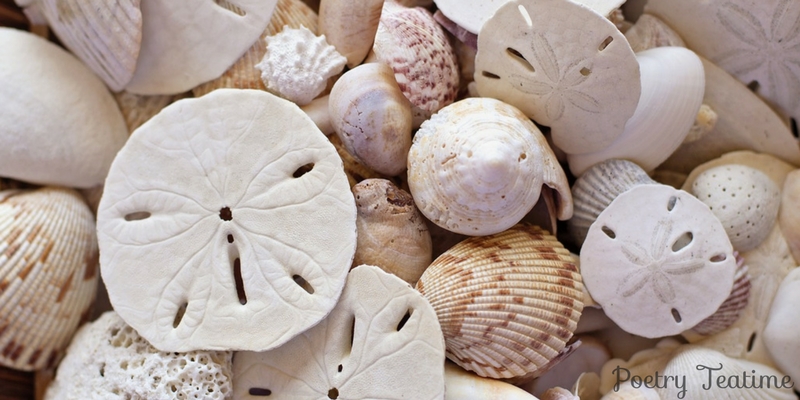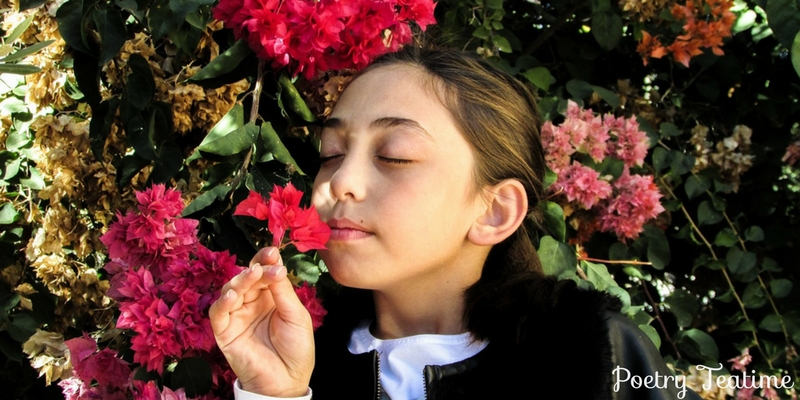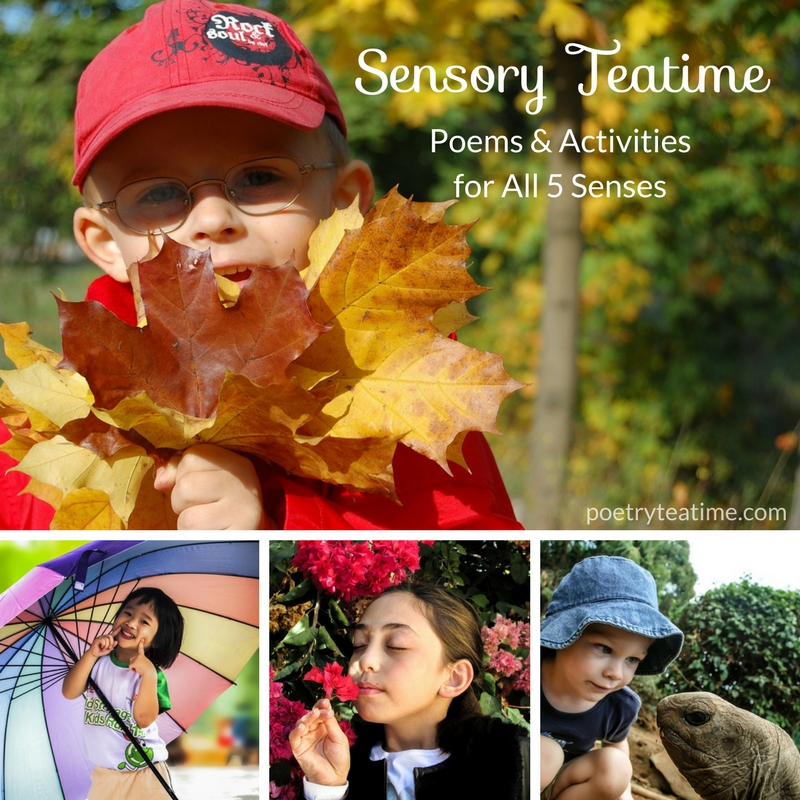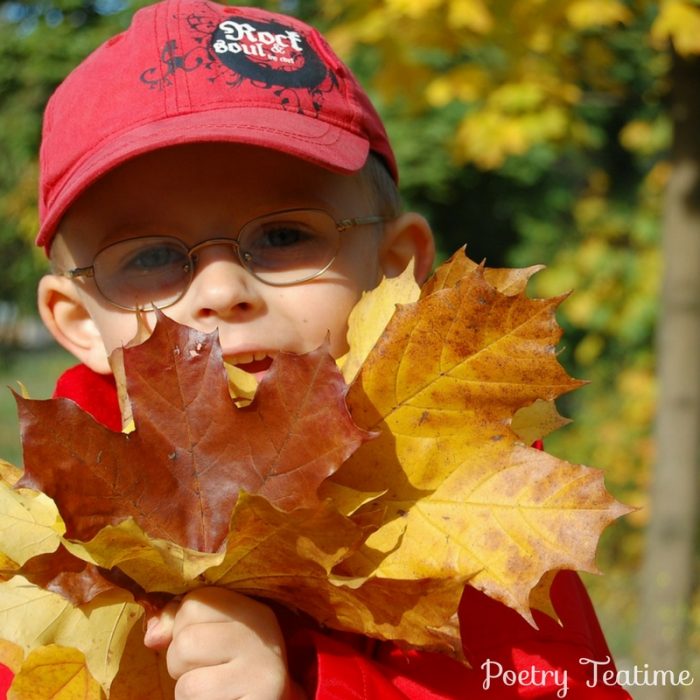One of the best part of poems is how they tickle your tastebuds, nudge your nose, enchant your eyes, ruffle your fingertips, and make your five senses come to life! In this post, you'll discover poems packed with sensory imagery. We also have ideas for activities that appeal to all of your senses. So brew a cup of tea, grab some poetry, and dive in!
Sight
One of the most concrete ways that poems spring to life is in their visual imagery. Pay attention to the sights of each poem, whether it’s the cracks in the sidewalk or the distant twinkle of lights from the 93rd floor of a skyscraper.
Here are some ideas to pay attention to visual imagery in your teatime today.
Pick your favorite image and illustrate it!
Compare different illustrations of poems and explain why you think one illustration works best
Go on a nature walk and collect an interesting-looking object, then write a poem describing how it looks
As an example of a poem packed with visual imagery, here’s a short poem by Arthur Guiterman.
Harvest Home
The maples flare among the spruces,
The bursting foxgrape spills its juices,
The gentians lift their sapphire fringes
On roadways rich with gilden tinges,
The waddling woodchucks fill their hampers,
The deer mouse runs,
The chipmunk scampers,
The squirrels scurry, never stopping,
For all they hear is apples dropping
And walnuts plumping fast and faster;
The bee weighs down the purple aster--
Yes, hive your honey, little hummer,
The woods are waving, “Farewell, Summer.”
Sound
One of our favorite elements of any poem is how it sounds when you read it out loud.
Activities with sounds:
Everyone gets a paper printout of the same poem and a pencil. Then, see who can circle the most examples of repeated sounds (like alliteration, rhymes, and more)
Varying the way you read out loud. Have each new poem be read in a different tone of voice (loud, soft, whispering), emotion (angry, sad, excited), or even a crazy accent!
Test out your reading-aloud skills with this sibilant poem by Amy Lowell!
Sea Shell
Sea Shell, Sea Shell,
Sing me a song, O please!
A song of ships, and sailor men,
And parrots, and tropical trees,
Of islands lost in the Spanish Main
Which no man ever may find again,
Of fishes and corals under the waves,
And sea horses stabled in great green caves.
Sea Shell, Sea Shell,
Sing of the things you know so well.

Touch
One of the elements of poetry that can be overlooked is the element of touch. Think about the textures we feel every day--the smooth skin of an apple, the cold metal of silverware, the scratchiness of sweaters. Focus on textures for a change!
Go on a nature walk and pick up four objects with different textures (a pebble, pinecone, etc.). With younger kids, hide the objects in a bag and have them guess which one they grabbed. With older kids, describe the different texture of each object.
Take a piece of paper and crayons and do rubbings of different objects around you! Collect leaves if you want, or practice on stranger things around the house like coins, wall surfaces (carefully!), wooden cutting boards, and more.
Inspect the different textures of the poetry books you’re using. Do some pages have smoother, almost shiny surfaces? Are some rough and snaked with bits of recycled paper?
Here’s a bit of a Robert Frost poem with some nice textual imagery.
From “Once by the Pacific”
The clouds were low and hairy in the skies,
Like locks blown forward in the gleam of eyes…
Smell
The sense of smell is vital to any poetry teatime! This is your chance to whip out the scented candles and potpourri for a sensory afternoon of reading poetry.
Russle up some scented candles from all the corners of the house and burn a few to give teatime a nice atmosphere
Boil a pot with cloves and apple juice or apple cider to fill the house with the smell of fall
If you have a few types of perfumes, lotions, or body sprays--and you don’t mind teatime smelling a little strong!--have the kids test the different smells and describe them by comparing them to nature. For example, “This perfume smells like a sunset on the ocean just as the tops of the waves are turning gold.”
Check out the smells that sprinkle this poem by Kathryn Worth.
From “Smells”
...The tall pink smell of peach trees,
The low white smell of clover,
And everywhere the great green smell
Of grass the whole world over.

Taste
Last but not least, another type of poetic imagery we don’t often focus on is our sense of taste. But here at Poetry Teatime, we’re all about the taste of a good afternoon tea! Today, take some time to appreciate the combination of poems and tastes!
Prepare three or four different types of teas and have each kid pretend to be a food critic, sampling and rating each type.
Have each kid pick a poem, then go to the pantry or fridge and pick one food they think matches or describes the poem in some way. Perhaps the sounds of the poem remind them of the slide of spaghetti, or maybe the image of clouds sparks the thought of cotton candy!
Galway Kinnell’s poem provides ample material for tastebuds.
From “Blackberry Eating”
I love to go out in late September
among the fat, overripe, icy black blackberries
...and as I stand among them
lifting the stalks to my mouth, the ripest berries
fall almost unbidden to my tongue...
We hope you enjoyed these suggestions for a more tactile teatime! Be sure to tease your senses in your next poetry teatime, and tell us if you had a particularly memorable teatime experience!



